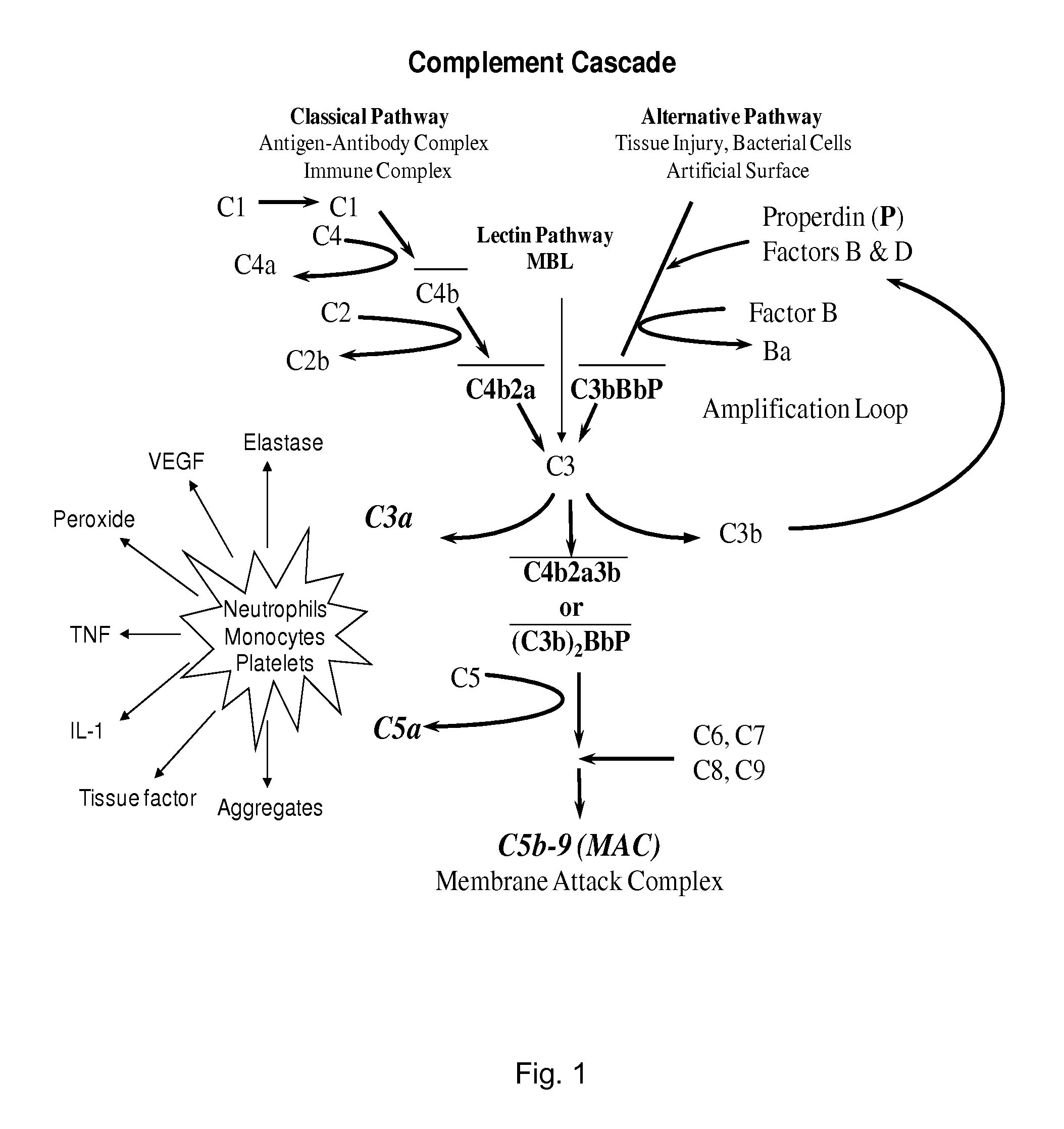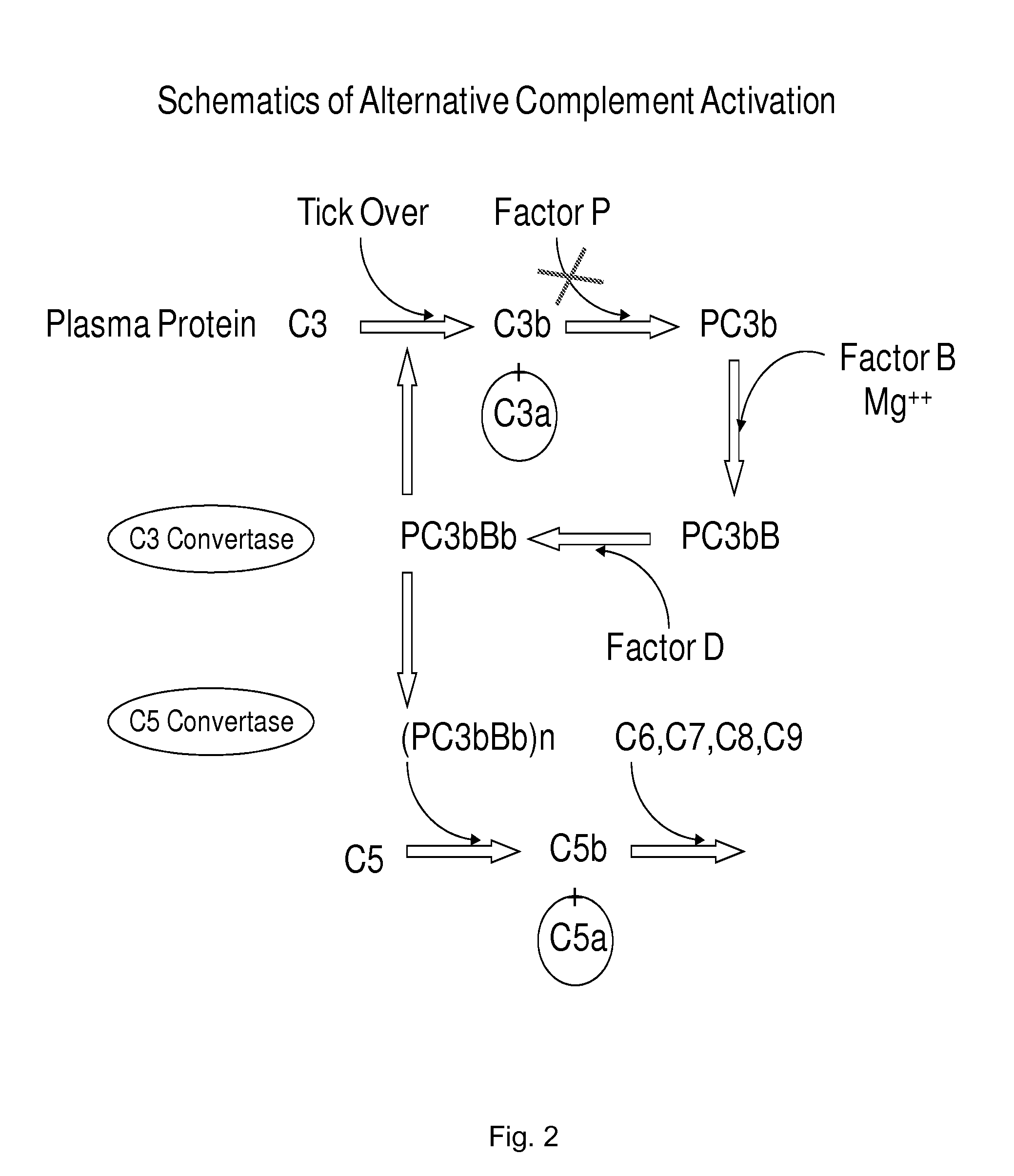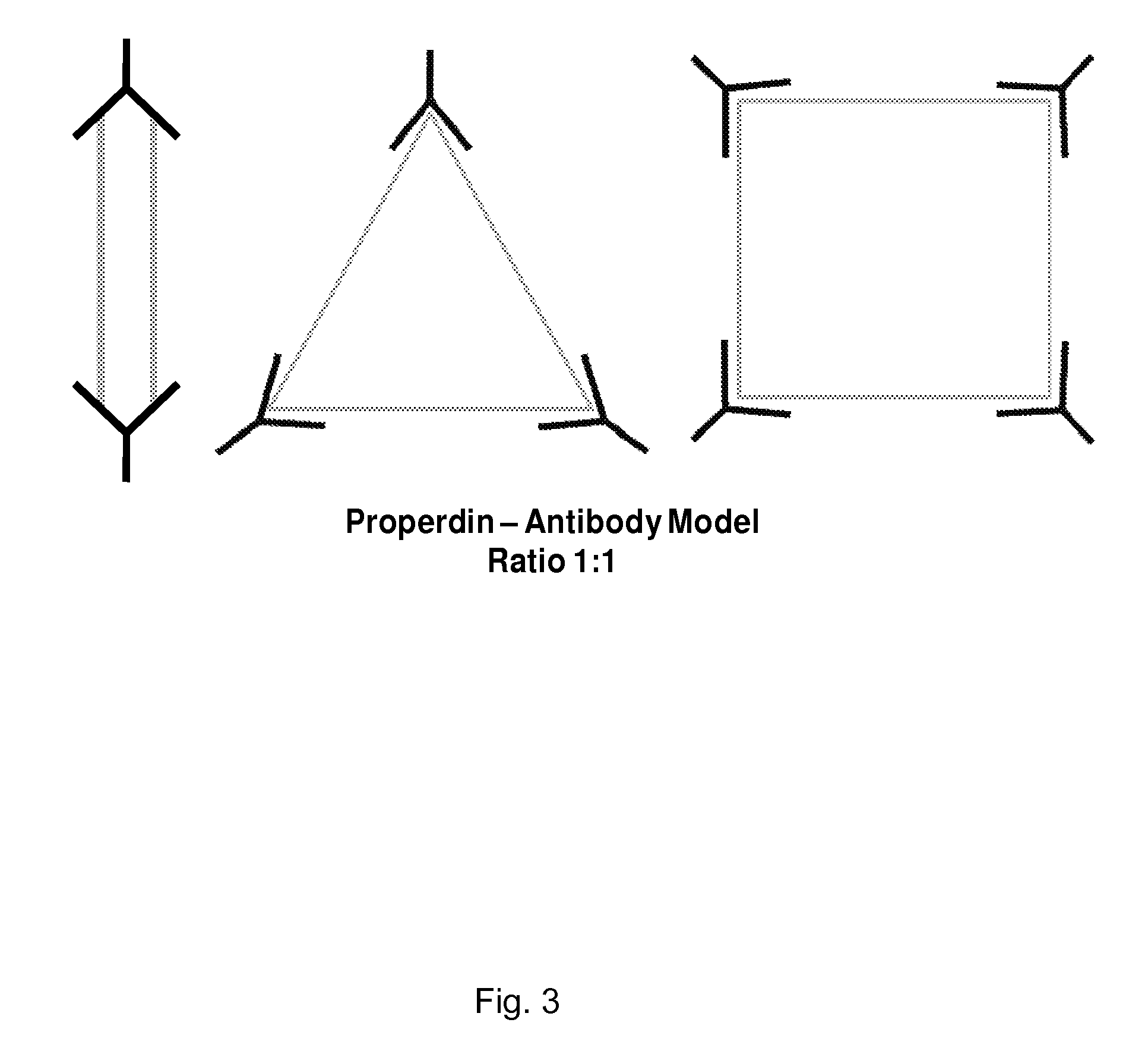Anti-properdin antibodies
a technology of anti-properdin and monoclonal antibodies, applied in the field of anti-properdin antibodies, can solve the problems of antibodies useless for therapeutic applications, studies that do not teach the effect of anti-properdin monoclonal antibodies on monocyte and platelet activation, etc., and achieve the effect of reducing the level of free properdin and inhibiting properdin binding
- Summary
- Abstract
- Description
- Claims
- Application Information
AI Technical Summary
Benefits of technology
Problems solved by technology
Method used
Image
Examples
example 1
Properdin Peptide CRSPRWSLWS (SEQ ID NO: 4) Inhibits Alternative Pathway Activation
[0216]The peptide CRSPRWSLWS (SEQ ID NO: 4) is located within the N terminal segment of properdin that connects the N terminal to TSR1 (SEQ ID NO: 1). Due to the small size of the peptide, it will not have the conformation of the native molecule and therefore is expected to have the poorer affinity compared to the native properdin. Properdin does not bind C3, it only binds C3b. C3 contains C3a and C3b not just C3b alone and might function differently than C3b. In this experiment, we tested inhibition of properdin binding to C3b by the peptide. We also determined if the peptide would also inhibit MAC(C5b-9) formation because formation of MAC demonstrates completion of the cascade.
[0217]C5b-9 Formation Assay: Microtiter wells were coated with LPS (2 μg / 50 μl per well) in PBS overnight at 4° C. Uncoated wells served as background controls. After aspirating the LPS solution, wells were treated with 1% BSA...
example 2
Properdin Peptide RYRRCVGWNG (SEQ ID NO: 5) Inhibits Alternative Pathway Activation
[0220]The peptide RYRRCVGWNG (SEQ ID NO: 5) is located within the N terminal segment of TSR1, this is the same segment that was previously shown to have no inhibitory activity in AP activation assay. We have shown that properdin binding to C3b is independent on ions and can occur in EDTA. The present experiments were conducted in blocking solution that does not contain Mg or Ni. We also tested all five peptides previously shown as inhibitory in P—C3 binding assay. Out of five, only two peptides were specific to properdin-C3b binding. The other three had no effect on properdin binding to C3b or AP activation. The peptide CRSPRWSLWS (SEQ ID NO: 4) has been discussed in Example 1 and the second peptide RYRRCVGWNG (SEQ ID NO: 5) is being discussed here in the Example 2. This peptide RYRRCVGWNG (SEQ ID NO: 5) represents the segment of properdin that connects the N terminal region to TSR1. Due to the small ...
example 3
Properdin Peptide (LCQPCRSPRWSLWSTWAPCSVTCSEGSQLRYRRCVGWNGQ) (SEQ ID NO: 2) Inhibits Alternative Pathway Activation in Rabbit Erythrocyte Hemolysis
[0224]A peptide (71-110) was assembled that contains both small peptides shown in Examples 1 and 2. The rationale for synthesizing the peptide was the results obtained on the two peptides. We postulated that the synthetic peptide Peptide (71-110) would inhibit AP activation of properdin binding to C3b. We also synthesized additional peptides corresponding to TSR5 and TSR6. All three peptides were evaluated in an alternative pathway dependent C5b-9 assay and properdin binding to C3b assay. In these assays we used a cell based C5b-9 assays instead of LPS based AP activation assay purely due to convenience.
[0225]Erythrocytes initiate the alternative complement cascade in human serum, and the resulting formation of MAC causes lysis of these cells. If properdin is essential to alternative pathway activity, then addition of the L-G blocking pep...
PUM
| Property | Measurement | Unit |
|---|---|---|
| concentration | aaaaa | aaaaa |
| pH | aaaaa | aaaaa |
| temperature | aaaaa | aaaaa |
Abstract
Description
Claims
Application Information
 Login to View More
Login to View More - R&D
- Intellectual Property
- Life Sciences
- Materials
- Tech Scout
- Unparalleled Data Quality
- Higher Quality Content
- 60% Fewer Hallucinations
Browse by: Latest US Patents, China's latest patents, Technical Efficacy Thesaurus, Application Domain, Technology Topic, Popular Technical Reports.
© 2025 PatSnap. All rights reserved.Legal|Privacy policy|Modern Slavery Act Transparency Statement|Sitemap|About US| Contact US: help@patsnap.com



